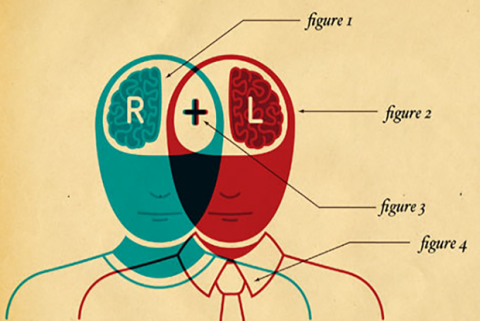New research studies I've seen show that some CIOs and CMOs are pointing fingers at each other. CMOs think technology is too difficult to use and that CIOs move far too slowly to address market conditions, while CIOs feel that a CMO’s marketing requirements change too often.
In my opinion, CIOs are mostly at fault for a lot of this divide — as much as 75 percent of it. And remember, I'm a CIO, so I'm pointing the finger at my own kind. Too often, I find that CIOs are too old school and afraid in their thinking about new technologies. This fear is grounded in a lack of understanding of the art of the possible and in an unaddressed need to investigate more options. This is why the CIO job is one of, if not the, hardest jobs at the executive table. CIOs have to deal with all of the day to day, all of the security threats, all of the needs to remain stable and cost effective, all while also building and empowering the new. That’s incredibly hard.
What CIOs need to understand as well are the pressures and time frames that CMOs work under. They are competing with everyone from established companies, to well-funded Silicon Valley players, to what I like to call “three guys and a dog” startups. They are competing against perceptions from sales that marketing can't produce truly qualified leads. In other words, they are worried about things that are a lot more immediate than what the average CIO worries about. If CIOs respond with a legacy way of thinking and working to meet these demands, that gives CMOs a handicap they don't need. And it's understandable that CMOs feel frustrated.
The end of more of the same
The cloud is a great example. As an IT executive, if your response to moving data and computing into the cloud to become more agile in the market runs along the lines of, “Oh, my gosh, it’s in the cloud. It’s not in my data center. I don’t control it!” That's where you start to open up your own CMO-CIO divide.
Too often, the teams that surround many CIOs do not think differently, typically because they feel skittish about bringing creative solutions forward to the CIO. So in many cases CIOs just see more of the same. Standing up more infrastructure internally and dealing with storage internally are not where CIOs need to be spending their time. That’s not adding value and that’s causing the CMO to feel under-served and only partially understood.
So the paradigm has to shift. That’s what I’ve been focusing on at The Weather Company. We’ve gone from 13 data centers down to five, and we're trying to get down to one as quickly as possible. I’m trying to get out of the infrastructure, compute and data storage business. I don’t want to spend time on it and I don’t want my people spending time on it. Instead I want my engineers to be writing code and building platform capabilities that expose our data and empower product developers to be able to quickly innovate. It’s a complete change for everyone, from operations to networking to security teams.
Getting to know you – and your data
To stay aligned with our heads of marketing across multiple divisions, I spend every moment I can meeting with our marketing and business teams. Our IT team also constantly tries to find the common themes among needs of the marketing and product teams.
Our approach is to prove to marketing that we are there not to be an IT organization, but to be a technology platform team. We are there to provide technology tools and capabilities that enable everybody to do their jobs. That’s our core mission.
As an example, look at big data analytics. You can create an API for all your unstructured and structured data, and show marketing how to use it. If you take the data in and store it, you're now able to provide it back to everyone through a through a variety of tools, allowing them to work on their insights and analysis. At The Weather Company, this means I can spend my time with the CMO understanding what it is you don’t know, what you would like to know, and what your needs are.
We also make it clear that we don’t do IT point solutions. We’re not going to go and build something special and one-off for one person. We’re going to look at those needs the same as an Amazon, a Google, or a Workday might. It has to meet the needs of the overall business, so everyone can’t be special on everything they need. That’s not how the new world of velocity-driven innovation works.
Then it’s all about training and arming the CMOs with their insight teams, their data scientists, so they will be empowered to do this. We don’t want to be in the business of doing it for them, and we're not going to be the bottleneck on finding the insights. This actually helps the relationship because we’re doing something they can’t do, not trying to do something they can do. And that makes everybody feel important and that they’re adding value while working together as a team.
Why do you have to work this way? Because you can’t focus on everything. I’ve got 22 massive services that come out of my data platform that we provide to the company, from historical weather data to forecasted radar data, to turbulence data for aircraft. All 22 of these components can’t be priority No. 1.
So there is no magic bullet to CMO-CIO collaboration. It’s about people. It’s about relationships. And it’s about changing what you were trying to do five or 10 years ago, which means instead of just not focusing on them, you actually have to stop doing those things. That’s a radical shift. But no one said it would be easy.
Bryson Koehler is executive vice president and CIO of The Weather Company. He is responsible for setting the strategic vision, financial planning, technical operations, direction and execution of strategic technology initiatives for the company. In the past, Bryson has worked as an operating partner in private equity and as SVP of global revenue and guest technology at InterContinental Hotels Group.




